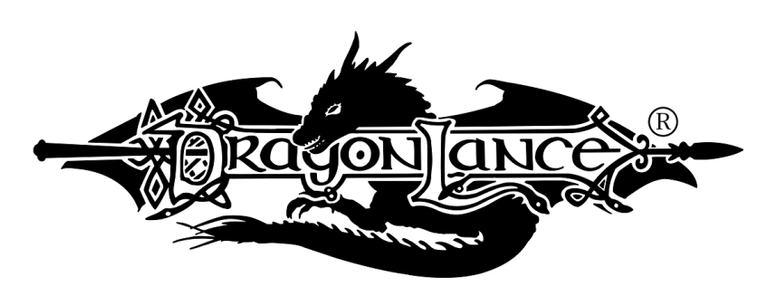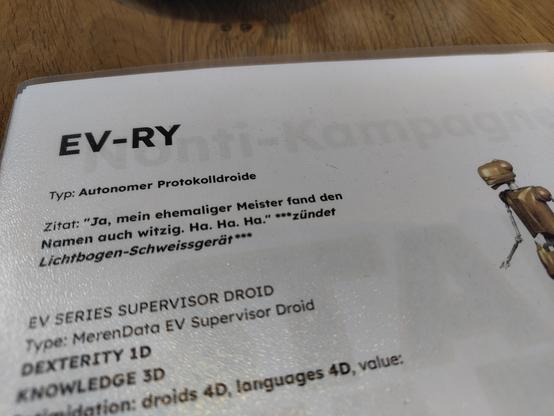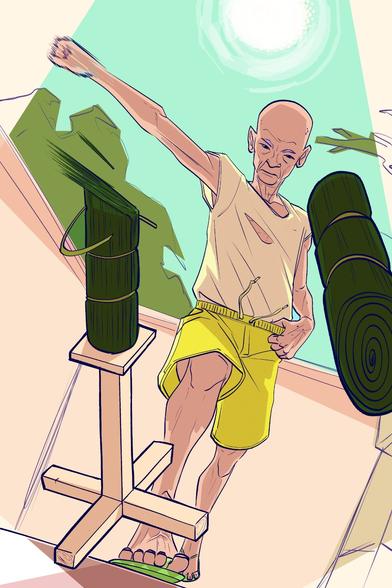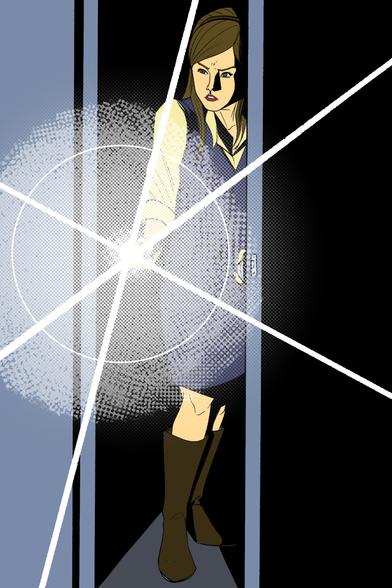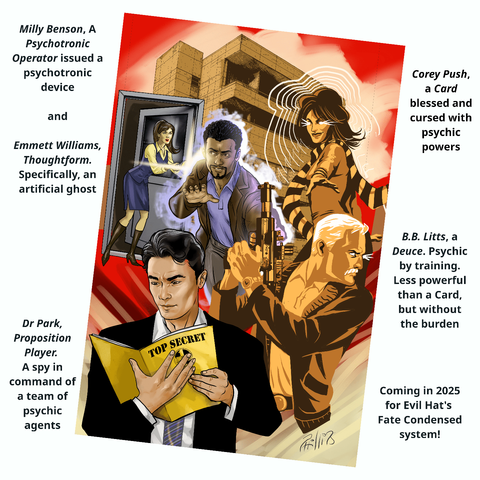Viewing Dragonlance Through a Daggerheart Lens
In high school, every summer, I would reread the Dragonlance Chronicles and the Dragonlance Legends novels. By my senior year, I was including The Legend of Huma and Kaz the Minotaur. Considering I used to read almost every D&D related novel that came out, I used to read a lot in high school. I developed some serious feelings over these characters.
Getting Dragonlance to the Table
My favorite D&D setting was the Forgotten Realms, but my favorite D&D novel series was Dragonlance. I ran several campaigns using the Dragonlance setting, but I think part of what made Faerun a better home for my games than Krynn was that none of my players had read the novels, and it was hard to translate the gravitas of certain setting elements to them.
“There was no divine magic for 300 years.”
“Oh, so kind of like the Time of Troubles.”
“No, not at all. It was like . . . the Cataclysm.”
“You’re using a tautology to explain why something in the setting is important.”
No, that’s not an actual conversation I had. It just feels like I had it. I don’t know if I can even picture any of my high school friends saying tautology. That was my job. All of this might also explain why Taladas felt like it was going to be a better region of the setting for ongoing campaigns, because there was less weight being conveyed in the fiction, plus the kits did a good job of framing the various cultures.
For years I wanted to run an alternate reality version of the War of the Lance, and by “alternate reality” I mean, the PCs 100% replace the Heroes of the Lance. Despite that, I also really wanted to see what players would do with the iconic characters in the iconic campaign of the setting. Because one of the foundational trilogies of the setting is about time travel and potential alternate realities, Dragonlance always felt a little like a superhero setting in that manner, where playing a game where history unfolded differently but started in a similar manner felt completely in line with the setting.
Alternate Reality/Alternate Game Engine
Because I have opinions about these characters and an emotional connection to them, I often think about them when I look at a new fantasy game system, especially if those games include classes/archetypes that at least partially line up to D&D conventions. That brings us (finally) to what I wanted to talk about. Within Daggerheart, I created the Heroes of the Lance. I did this in Demiplane, which is important for reasons I’ll get to. I’m going to include links to each of the characters, because it would be a lot to include them all in the post in their entirety.
General Conversion Notes
I’m trying to avoid doing too many rules tweaks. I want to see if I can make satisfying versions of the characters without creating house rules for the game. That doesn’t mean I may not make some choices informed by the setting (like not giving Raistlin much in the way of Splendor versus Codex domain cards).
There are a few things I may go back and tweak, because I was being a little more literalist than I need to be. For example, I can give Raistlin better armor by re-flavoring that armor as warded robes. There were many examples of wizard robes in the novels that were cited as having protective runes and sigils on them, and very few rules have ever been added to the official D&D material to reflect what those robes actually did, other than saying just assuming standard D&D magic robes reflect what was being described.
There are a few classes that get overtly magical abilities that I’m going to squint and treat as just extreme talent. That’s a big deal with the rogue, especially. Some characters might have benefited from multi-classing, even if they weren’t in D&D rules, but rules as written, you can’t multi-class in Daggerheart until 5th level, and I picked 3rd level as a better feeling of where the Heroes of the Lance were at the beginning of Dragons of Autumn Twilight.
I renamed a lot of Domain Cards for flavor, but I feel like it was less necessary for the Domain Cards than it was for basic equipment. For example, Flint traditionally carries an axe and shield. Battle axes default to two handed weapons in Daggerheart, and the only one handed axe is a magic weapon. In Daggerheart, that doesn’t mean a starting character wouldn’t have it. It just means that it should be taken by classes that more overtly use weapons that do magic damage instead of physical damage. But all we really need is a one handed weapon that does physical damage and uses strength as the trait used to attack with it. That means we give Flint a mace and call it a one handed axe.
This isn’t really a hack, because the core rules mention that things like weapons are examples to be described as needed, and gives examples in the text. Axes and maces don’t do slashing and bludgeoning damage, they both do physical damage in Daggerheart, so there is no reason not to call a mace a one handed axe.
The Heroes of the Lance, as traditionally presented, are really fighter heavy. Tanis, Flint, Caramon, and Sturm are all fighters. That means even if we make some of them Guardians and some of them Warriors, one or both classes is going to have to support multiple characters to make them distinct.
There was one last thing about the conversion process that was interesting to me. There are no Communities that reflect growing up in a crossroads town, or even a rural community. These both feel like they would be natural additions to the Community offerings, and while many people are excited about new Domains and new cards for existing Domains, I really hope we see a few more Communities. Despite that, it’s not too hard to find communities that fit with some aspect of how various characters were raised, so it’s not a major sticking point.
Each header with the character’s name is a hyperlink that leads to the “anyone can view” character sheet for that character in Demiplane.
Tanis may have been the biggest challenge of these characters. The wisest sage of all Dragonlance gaming interpretation, Cam Banks, has mentioned that Tanis really should have a class like Marshal/Warlord to reflect his role in the story, but classes like that aren’t always core to various editions of D&D, especially versions that officially translate Dragonlance.
I thought of trying to make Tanis into a Bard to reflect his ability to inspire others, but since multi-classing doesn’t come into play until 5th level, a 3rd level Tanis using Bard abilities would have to be only a Bard, and it’s really hard to make a Tanis that feels like Tanis by using the Domain Cards available to Bards up through 3rd level. Codex abilities are pretty overtly magical, and while you can pretty easily describe a lot of Grace Domain abilities as more mundane, Tanis really wasn’t exceptionally good at lying, or able to dazzle foes with his words. He was just good at inspiring and directing his friends.
In the end, I went with Call of the Brave Warrior for Tanis. There are a few Domain Cards that deal with bolstering allies, so this was a good fit for Tanis. It’s interesting to note that I thought Tanis was going to be a character that leaned hard into Presence, and I gave him a good score in that Trait, but one of the big Domain Cards you can use to direct others, Strategic Approach, runs on Knowledge. So Tanis has as much Knowledge as he has Presence. I don’t think that strains my concept of him, but it meant I wanted to make sure that some characters had their primary defining trait bump just a wee bit above other characters. For example, I felt like I needed to make sure Raistlin still had a higher Knowledge than Tanis.
I thought Flint was going to be a kind of boring conversion, but I had a little more fun playing with things we know about Flint than I expected. I made Flint into a Vengeance Guardian, because he holds a grudge, and he’s the father figure to the group, and it makes sense to give him the combatant option about protecting others.
I leaned toward giving Flint abilities that spent stress. This is going to be a little morbid, but knowing that Flint’s time on Krynn is going to be brought to an end by his heart failing him, pushing his stress to keep going kind of felt appropriate. The one ability that directly boosts his allies is one that triggers on a Long Rest, which feels appropriate. Flint isn’t boosting others in a fight or inspiring them. He sits around the fire and asks Tanis what’s bothering him.
Tasslehoff was one of the trickier Companions to translate to Daggerheart. Part of that revolves around the idea that Rogues in Daggerheart are usually willingly, intentionally good at crime, often in ways that imply organized crime organizations, or they are supernatural assassin types. Neither of these paradigms fit Tasslehoff, but no other class really makes sense, because the Rogue is still the class for doing sneaky stuff unnoticed.
Here’s some of my logic for the choices I made for Tasslehoff. One of his abilities gives him the ability to Enrapture a target. Rather than being so charming, my thought on this is that when Tasslehoff gets going on an Uncle Trapspringer story, either people are trying to keep up with the twists and turns of the story, or having their eyes glaze over at the sheer number of details and speed of the pacing. One of Tasslehoff’s abilities makes him Invisible, but D&D 2024 has already retrained my brain to read “invisible” as, “you constantly just happen not to look at someone or something” as opposed to actually being invisible. He’s just that good at sneaking around.
Troublemaker was the easiest of the abilities I picked for Tasslehoff. Stressing out an opponent by taunting them is perfect for the standard kender taunting ability. Pick and Pull was another easy choice. Yes, he’s good at picking locks and picking pockets. Deft Deceiver is all about being a good liar, and Tasslehoff isn’t a deceptive person, but I think this works for him being so convinced that he really didn’t take something from your pouch that maybe you believe him too?
Halfling works well to stand in for Kender as an Ancestry. The Luckbringer ability matches Tasslehoff’s ability to accidentally do exactly what the party needs him to do well in his story role.
It’s easy to picture Sturm as a Warrior, but when you have to choose between Warrior and Guardian, Guardian is very tempting. I leaned into Warrior only because Sturm has a general desire to protect, but not as much of a personal drive within the Companions to protect any specific person, the way characters that I gave Guardian to may have. Call of the Slayer sounds more bloodthirsty than Sturm’s demeanor, but I think when you look at Call of the Slayer versus Call of the Brave, which I gave Tanis, I think Call of the Slayer works for someone drilled to fight in very specific ways, passed down through his family.
Orderborne may have been the easiest Community to assign to any of these characters. Even spending most of his childhood in Solace, Sturm had Solamnic values drilled into him. Picking three sayings or values to call on in the game is just screaming for you to write “Est Solarus oth Mithas” on your character sheet. I also had fun renaming Sturm’s Domain Cards to sound like values that would be outlined in the Measure.
The biggest challenge to making Caramon is that spellcheckers keep wanting to rename him “Cardamom Marjoram.” Once you come to an agreement with your spellcheckers dictionary, the next step is to decide on Warrior versus Guardian. In the end, I went with Stalwart Guardian, because at his core in Dragons of Autumn Twilight, Caramon is about protecting Raistlin above anything else.
It was really easy to find abilities that made it feel like Caramon is throwing people around, bashing their heads together, and barreling through opponents. While you can rename weapons, it made sense to give Caramon a weapon with the broadsword’s traits, but then let him use Strength to attack with it. Caramon, like his brother, is a character I felt needed to be a little better at his defining trait than anyone else in the group, so he gets a +3 Strength.
It’s a little outside of just converting Caramon to Daggerheart, but while it made sense to give Caramon a -1 to Knowledge, I like that the trait is Knowledge, not Intelligence. One of Caramon’s character developments by the end of the second trilogy learned that he was intentionally leaning into being “the stupid one” because he was defining himself in contrast to Raistlin.
There was never any question that Raistlin was going to be a Wizard and lean heavily on the Codex side of Domain Cards. But Raistlin is obsessed with learning new magical secrets, so why go with School of War? Because regardless of his interest in learning every magical secret he could find, Caramon and Raistlin were raised by their older sister Kitiara, who was a mercenary, and worked as a mercenary with his brother while away from the Companions. It also fits with Raistlin’s major trait. For all of his ruined health, Raistlin survives. Face Your Fear just feels exactly like something Raistlin should have. Being more dangerous when things feel the most dire? If you assume that also means doing extra damage just out of spite, that Raistlin right there.
I didn’t mention this under Caramon’s entry, but I gave Caramon and Raistlin the Slyborne Community. I mentioned above that there isn’t really a good Community for representing the crossroads that is Solace, but I think Slyborne works for Caramon and Raistlin’s upbringing. Caramon mentioned Kit taught them how to fight, but also how to kick someone when they were down. The Scoundrel ability works well for sussing out someone’s less admirable motivations and finding a place to catch your breath when people want to kill you, which leans into Raistlin’s survivability. And if you want to argue that Caramon wasn’t as wary as other people as Raistlin . . . Caramon always knew exactly how his brother felt about him and buried that knowledge.
Some of the “standard” weapons in Daggerheart just do magic damage, because thematically, people using those items are throwing magic around. Even though Raistlin didn’t directly use the Staff of Magius to fire off spells from the staff, it still doesn’t feel wrong to give him a staff that does magic damage as his primary weapon, and flavor it as him just using the Staff of Magius as a spellcasting focus.
I’m trying not to just go into how many Wizard abilities are perfect for portraying Raistlin, because, well, that’s just means the class is functioning as expected. I had a ridiculous amount of time renaming the books referenced on the Domain Cards, and that really helps to underscore the feel of the Wizards of High Sorcery. When he picks up more cards after exploring Xak Tsaroth, it’s a perfect excuse to rename another book to represent the spellbooks of Fistandantalus that he gets from Bupu. I leaned a little away from Splendor Domain Cards, although they worked for throwing some Fistandantalus spiritual manipulation into the mix. Because of the setting itself, I took Healing Hands and Mending Touch off the table. Reassurance was great for Raistlin, but not as reassurance. It felt like a good stand in for those times when Tanis would ask Raistlin would give him the worst-case scenario.
I complain about Raistlin eating up so much of the word count of the novels as the series wore on, and I just did the same thing. Damn you Raistlin.
Riverwind is right up there with Drizzt for D&D novel rangers that don’t do what the current edition of D&D assumes rangers will be doing. It’s not that the class feels like a poor fit, it just does so much more, and in so many supernatural ways, that the class can do.
Back when I was in a game playtesting the earlier version of the Daggerheart rules, I mentioned that I really like how the Daggerheart ranger feels flexible enough to portray a lot of divergent concepts that surround the concept of a ranger, that focuses on being a survivor and a hunter, and can lean more or less supernatural. That’s good for finding some abilities that feel right for Riverwind.
One of the important elements of Riverwind’s backstory was surviving an onslaught of things trying to kill him when he first found the Blue Crystal Staff. The Daggerheart ranger has a lot of “you’re going to have to fight hard to kill me” abilities. Yeah, I know, “where was that survivability when Onyx first showed up?” Hey. Onyx is the first dragon we get to see in the books, and we needed to see the upper end of what the Blue Crystal Staff can do. Sorry for the digression.
The irony about Goldmoon is that it’s more difficult to build a more generic D&D cleric in Daggerheart than it is to build Goldmoon at the beginning of Dragons of Autumn Twilight. I made her a Divine Wielder Seraph, because there isn’t a much better example of a divinely powered character that uses a weapon granted by their god. There is also a staff in the equipment section that uses Instinct for its attack Trait and does magic damage, and that works really well for the Blue Crystal Staff.
How will this play as Goldmoon moves past, discovering the Disks of Mishakal, when she isn’t carrying the Staff anymore? Honestly, if I was running this as a campaign, I’d be fine with Goldmoon manifesting a magical “echo” of the staff when she needs to have it. It’s not what happened in the books, but it also doesn’t feel drastically wrong. Since we’re just looking at the Heroes of the Lance and Dragons of Autumn Twilight, I don’t have to figure out Elistan or Crysania in Daggerheart, and you can’t make me (but I probably will eventually).
I enjoy giving Goldmoon the Highborne Community to represent her regal bearing as a princess of the Que-Shu. This personality trait gets obscured by her faith and her relationship with Riverwind, but it’s definitely there, and it’s nice having a mechanical reminder of it.
The River of Time
Am I going to run the War of the Lance storyline using Daggerheart? Almost certainly not. Do I want to see if I can make a Campaign Frame that captures what I was trying to do with some of these characters and latches on to what is unique about the setting? Yes, I want to do that. I would also like to make a few signature adversaries, like Draconians, and maybe get some people together not to run all the way through the adventures, but maybe to play some key scenes from the books, like the wicker dragon encampment or the confrontation with Onyx.
While it was tricky to convert some characters, it felt less like the rules were fighting me, which I have felt in other game systems when I try to do similar conversions, and more like I needed to twist and turn game elements and connect them at different points before I got a solid feel for what the story would feel like at the table, rather than literally what every game element says it is.
Daggerheart feels like it’s going to be a good, flexible game for heroic fantasy roleplaying to emulate a lot of inspirations. Like any game, I’m sure it’s going to be more or less suited for different stories, and I ran into a few tricky elements in this conversion, even though I think Dragonlance is probably closer to Daggerheart’s core competencies than some other settings might be. But I think Daggerheart’s strength is going to be that it’s better at making a setting that feels like Dragonlance than literally being Dragonlance. I look forward to more tinkering.
I know I haven’t been plowing through content recently, but if you still want to help me maintain the blog and continue to look at lots of different RPG content, you can pick up some of these items via my affiliate links below. Thanks!
- Daggerheart Nexus + PDF
- The Journals of Kaz the Minotaur: The Lost Colony
- Shadow of the Dragon Queen (Roll20)
- War of the Lance (3.5)
- Legends of the Twins (3.5)
- Dragons of Autumn (D&D 3.5)
- Dragonlance Classics (15th Anniversary Edition)
- Time of the Dragon (2e)
#Daggerheart #dnd #Dragonlance #fantasy #gaming #RoleplayingGame #rpg #TabletopRoleplaying #ttrpg
